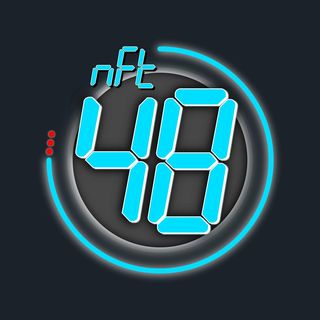
NFT marketplaces are gaining popularity rapidly in the digital world, allowing creators to monetize their unique digital content through blockchain technology. Building an NFT marketplace can seem daunting, but with the right technical knowledge and tools, it can be a rewarding experience. This technical guide will provide an overview of the key components needed to build an NFT marketplace and offer useful tips, tricks, and best practices to help you get started.
Decentralized vs Centralized Marketplaces
When building an NFT marketplace, the first decision to make is whether to create a decentralized or centralized platform. Decentralized marketplaces use blockchain technology to provide a trustless, transparent platform where users can transact without intermediaries. Centralized marketplaces, on the other hand, have a centralized entity that controls the platform and its operations.
Choosing a Blockchain for Your Marketplace
Choosing the right blockchain is crucial when building an NFT marketplace. Ethereum is the most popular blockchain for NFTs, offering smart contract functionality and support for different token standards. However, other blockchains like Solana, Binance Smart Chain, and Polkadot are also gaining popularity due to their scalability, speed, and low transaction fees. It’s essential to consider the unique needs of your marketplace to determine which blockchain is the best fit.
Smart Contracts and Interoperability
Smart contracts are self-executing programs that allow for the automation of transactions between parties. When building an NFT marketplace, smart contracts are critical to ensure that the transactions are executed transparently and securely. Interoperability is also essential to allow for the seamless transfer of NFTs between different blockchains and marketplaces.
Token Standards for NFTs
Various token standards exist for NFTs, including ERC-721, ERC-1155, and ERC-998. It’s crucial to understand the differences between these standards when building your NFT marketplace. ERC-721 is the most common standard for NFTs, while ERC-1155 allows for the creation of fungible and non-fungible tokens on the same contract. ERC-998 is a more advanced standard that allows for the creation of NFTs that can own other NFTs.
Implementing User Authentication and Authorization
User authentication and authorization are critical to ensure that only authorized users can access and transact on your marketplace. Implementing a secure and robust authentication system is essential to protect your users’ data and your platform from malicious attacks. It’s crucial to use industry-standard authentication protocols and frameworks when building your platform.
Developing a Secure Wallet Integration
Wallets are essential components of any NFT marketplace, allowing users to store, manage and transfer their NFTs. Integrating a secure wallet solution is essential to ensure that your users’ assets are protected from theft and fraud. It’s essential to use trusted and secure wallet providers and implement robust security measures to protect your users’ assets.
Designing a User-friendly Interface
User experience is critical for the success of your NFT marketplace. Designing a user-friendly interface that is easy to use and navigate is essential to attract and retain users. It’s essential to consider the unique needs of your users and provide features that enhance their experience, such as search and filtering options, notifications, and social sharing.
Hosting and Scaling Your Marketplace
Hosting and scaling your marketplace are critical components of building a successful NFT platform. Decentralized marketplaces use peer-to-peer networks to distribute the load and ensure scalability. However, centralized marketplaces require reliable and scalable hosting solutions to handle the traffic and volume of transactions. It’s essential to choose a hosting provider that offers reliable, scalable, and secure hosting solutions.
Leveraging Metadata for Your NFTs
Metadata is essential for NFTs, providing information about the creator, the asset’s history, and the asset’s ownership. Leveraging metadata can enhance the value of your NFTs and provide additional information to potential buyers. It’s essential to use metadata standards that are compatible with different blockchains and ensure that the metadata is accessible and transparent to all users.
Marketing and Promoting Your Marketplace
Marketing and promoting your marketplace is essential to attract potential buyers and creators to your platform. Leveraging social media, influencers, and community outreach can help increase brand awareness and drive traffic to your platform. It’s crucial to develop a robust marketing strategy and track the effectiveness of your campaigns to ensure that you’re reaching your target audience.
Future of NFT Marketplaces and Trends
The NFT marketplace is rapidly evolving, with new trends and developments emerging every day. Some of the key trends to watch include the integration of NFTs into social media platforms, the use of NFTs in gaming and virtual worlds, and the development of new blockchain solutions to enhance scalability and interoperability. Keeping up with these trends and developments is critical to ensure that your NFT marketplace remains relevant and competitive in the market.
Building an NFT marketplace can be a complex and daunting task, but with the right technical knowledge and tools, it can be a rewarding experience. This technical guide has provided an overview of the key components needed to build an NFT marketplace and offered useful tips, tricks, and best practices to help you get started. By following these guidelines and keeping up with the latest trends and developments, you can build a successful NFT marketplace that attracts buyers and creators from around the world.
